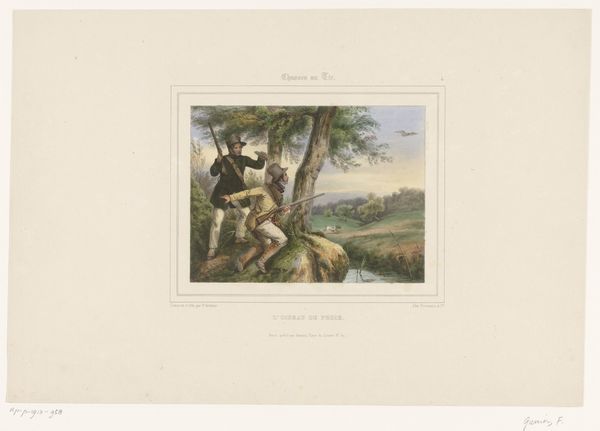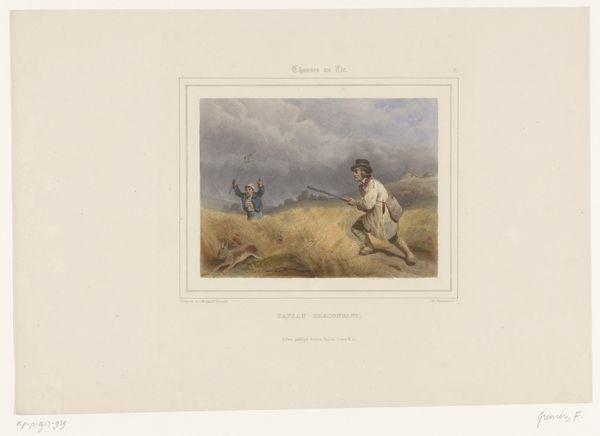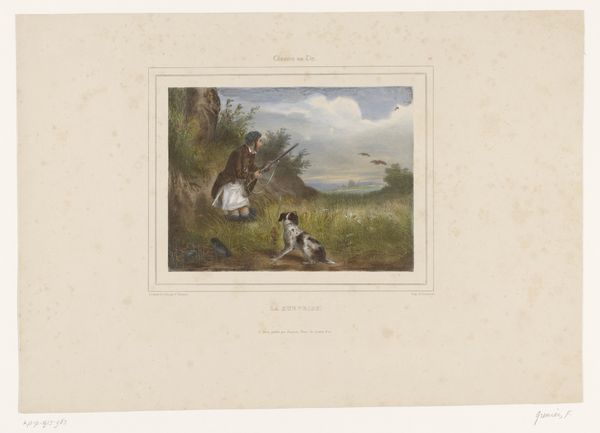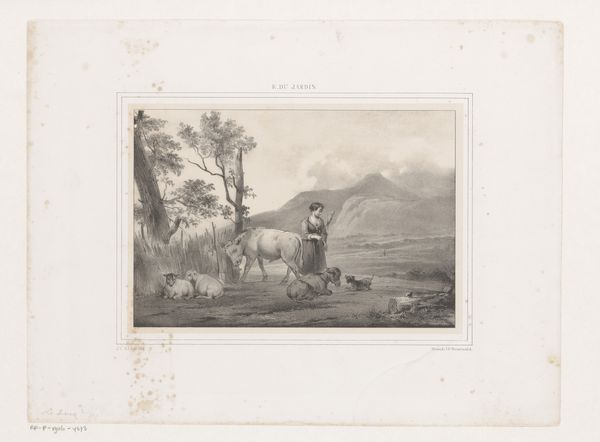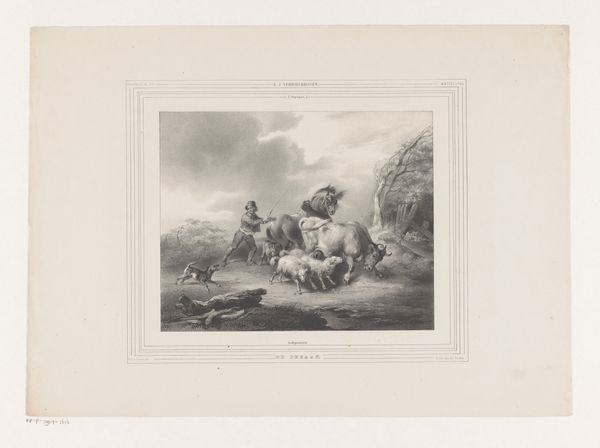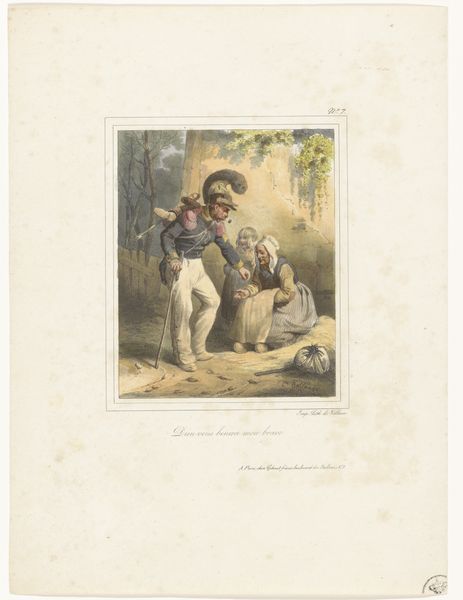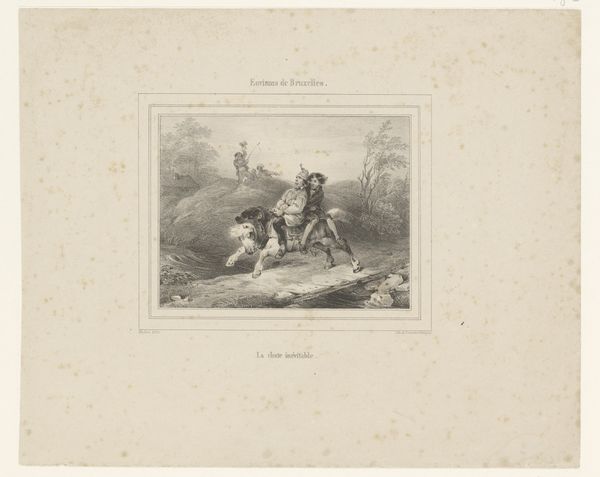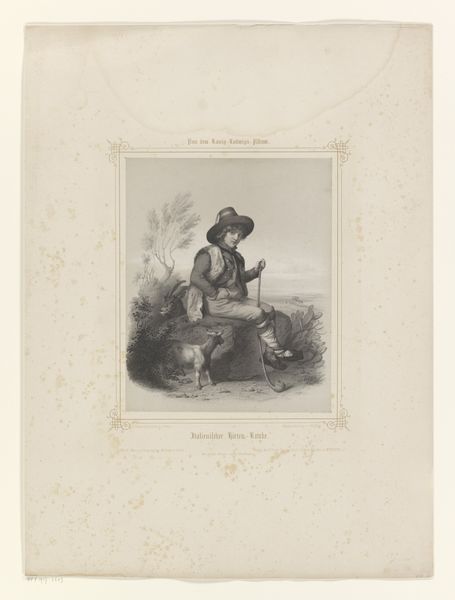
# print
#
landscape
#
figuration
#
romanticism
#
genre-painting
Dimensions: height 285 mm, width 412 mm
Copyright: Rijks Museum: Open Domain
Editor: Here we have "Hunting Overseer with Three Hunting Dogs," a print by François Grenier, made sometime between 1831 and 1846. The Romantic-era landscape has this kind of idealized country feel, but the depiction of the man's work really grabs my attention. What stands out to you in this piece? Curator: As a materialist, I see a confluence of labor and consumption here. The very *process* of printmaking becomes central. We see the materials--paper, ink, the plates used for printing–but what's their connection to the content: the overseer, his tools, and, critically, those dogs? Think about how each element depends on skilled labor – from the printmaker carefully transferring the image to the overseer managing the hunt. What is being circulated and consumed here, besides the image? Editor: The print itself becomes a commodity, representing a certain lifestyle or ideal related to hunting, right? Like, this piece depicts the management of labor to obtain consumable resources, and the print facilitates consumption of its representation. Curator: Precisely! And look at the implied social context: who would consume this print, and what would it mean for them to possess it? It speaks volumes about access, leisure, and class structures of the time. The labor isn’t just in the hunt, but in the act of representing it for a specific market. Editor: So, it's less about the romanticized view of nature and more about the mechanics and social implications of representing this specific activity through this particular medium. I never thought about it like that before. Curator: That’s exactly the value in examining the material reality of art, shifting away from purely aesthetic interpretations towards an understanding rooted in production, consumption, and labor. Editor: Thanks. I’ll definitely look closer at the production process, now. This piece embodies that dynamic between labor and how it is captured visually, and it highlights so many facets of class and social hierarchy.
Comments
No comments
Be the first to comment and join the conversation on the ultimate creative platform.
